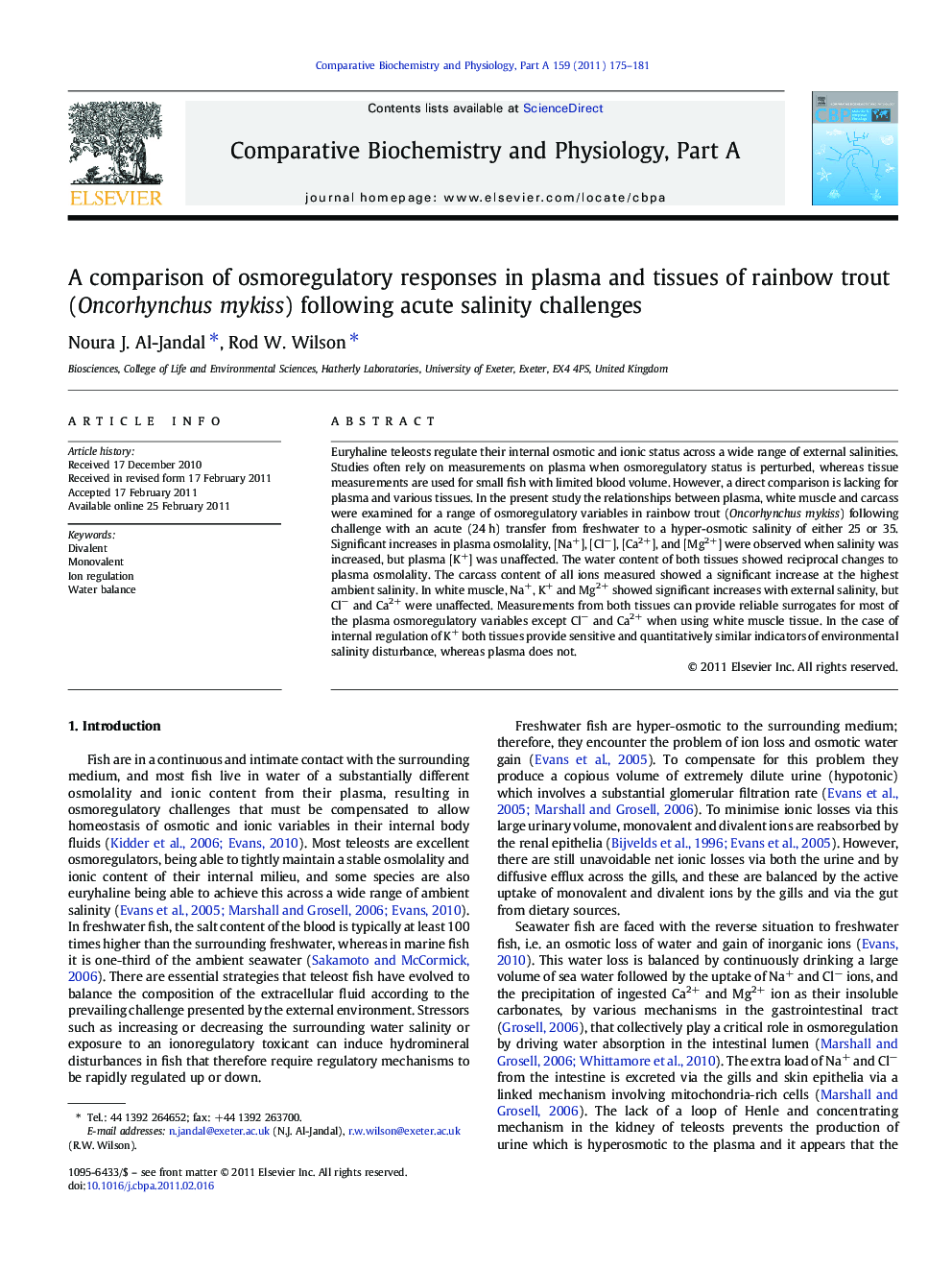| Article ID | Journal | Published Year | Pages | File Type |
|---|---|---|---|---|
| 1972825 | Comparative Biochemistry and Physiology Part A: Molecular & Integrative Physiology | 2011 | 7 Pages |
Euryhaline teleosts regulate their internal osmotic and ionic status across a wide range of external salinities. Studies often rely on measurements on plasma when osmoregulatory status is perturbed, whereas tissue measurements are used for small fish with limited blood volume. However, a direct comparison is lacking for plasma and various tissues. In the present study the relationships between plasma, white muscle and carcass were examined for a range of osmoregulatory variables in rainbow trout (Oncorhynchus mykiss) following challenge with an acute (24 h) transfer from freshwater to a hyper-osmotic salinity of either 25 or 35. Significant increases in plasma osmolality, [Na+], [Cl−], [Ca2+], and [Mg2+] were observed when salinity was increased, but plasma [K+] was unaffected. The water content of both tissues showed reciprocal changes to plasma osmolality. The carcass content of all ions measured showed a significant increase at the highest ambient salinity. In white muscle, Na+, K+ and Mg2+ showed significant increases with external salinity, but Cl− and Ca2+ were unaffected. Measurements from both tissues can provide reliable surrogates for most of the plasma osmoregulatory variables except Cl− and Ca2+ when using white muscle tissue. In the case of internal regulation of K+ both tissues provide sensitive and quantitatively similar indicators of environmental salinity disturbance, whereas plasma does not.
